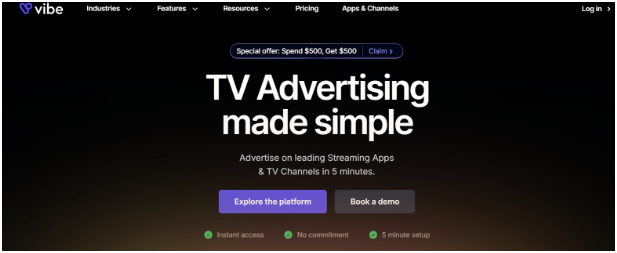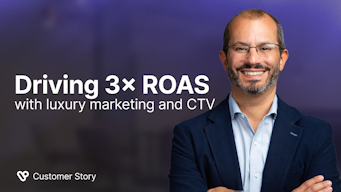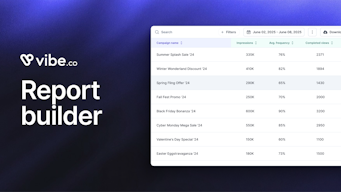Impression vs Engagement: 5 Key Differences to Know
How do they differ?
And most importantly, how do they impact your marketing strategy?
Let me break it down for you. In this blog, I will walk you through the 5 key differences between impressions and engagement that you need to know to boost your campaigns. I’ll cover the following:
- What each term means: I’ll explain impressions and engagement simply.
- How they’re measured: I’ll analyze the tools and metrics that track these two important numbers.
- How they impact your strategy: I’ll help you understand how impressions can boost visibility while engagement tells you if your audience is actually interacting with your content.
- Impression vs Engagement: I’ll show you how these two metrics differ and how to use both to get a clearer picture of your campaign’s success.
- Which metric to focus on: Depending on your goal—whether it’s awareness or customer loyalty—you’ll know which metric to prioritize.
By the end of this blog, you’ll know exactly how to use impressions and engagement to implement better marketing strategies.
Skip reading, and you might miss the insights that could make or break your next campaign.
Let’s begin!
Quick Glance Comparison: Impressions vs Engagement
Here’s a quick comparison of Impressions vs Engagement:
| Feature | Impressions | Engagement |
|---|---|---|
| Definition | The number of times your content is displayed. | The actions people take with your content (likes, shares, comments). |
| Focus | Visibility and reach. | Interaction and connection. |
| Measuring | Counted when your content appears on someone's screen | Counted when someone clicks, likes, comments, or shares. |
| Goal | Building brand awareness. | Creating deeper customer interaction. |
| Best For | Campaigns focused on visibility and reach (e.g., ads, brand launch). | Campaigns aiming for customer involvement (e.g., product promotions, lead generation). |
What Are Impressions?
Impressions are simply the number of times your ad, post, or content is shown to someone. It doesn’t matter if they click on or interact with it; they just see it.
For example, let’s say you run an ad on Facebook. If 1,000 people scroll past your ad on their feed, you’ve had 1,000 impressions. Even if no one clicked on it, those 1,000 people have seen your ad.
So, while impressions tell you how far your content has traveled, they don’t tell you if people are interested in it or not.
In short, Impressions means Visibility. This is a great way to measure whether your content is reaching the right audience, even if they don’t take action immediately.
Now that you understand impressions, let’s learn what engagement means and how it tells a different part of the story.
Also Read: Reach vs Impressions: 5 Key Differences To Check
What is Engagement?
Engagement is when people interact with your content. This includes actions like liking, commenting, sharing, clicking, or even watching a video.
It’s not just about seeing your ad; it’s about reacting to it.
For example, if you post a picture on Instagram and 50 people like it, 10 comment, and 5 share it, that’s engagement. The more actions people take, the higher your engagement is.
Engagement helps you understand if your content is resonating with your audience. Unlike impressions, engagement shows that someone took the time to respond to your content, which indicates they’re more interested.
In short, Engagement means Interaction. It shows how much your audience is connecting with your content.
How Are Impressions and Engagement Measured?
Measuring impressions and engagement helps you track the performance of your content and understand its impact. Let’s look at how to measure each one:
How to Measure Impressions:
You can measure impressions through:
- Google Analytics shows how often your website pages or ads are viewed.
- Social Media Insights: Platforms like Facebook, Instagram, and Twitter track how many people saw your posts.
- Ad Platforms: Tools like Google Ads or LinkedIn Ads give you data on impressions for your paid ads.
So, these tools tell you how far your content is reaching, giving you an idea of its visibility.
How to Measure Engagement:
Now that you understand impressions, let’s talk about measuring engagement:
- Clicks: When someone clicks on your ad or link, it means they’re interested enough to take action.
- Likes, Comments, and Shares: These are clear signs that your audience interacts with your content.
- Video Views: If people watch your video, it means they’re engaging with your message.
- Conversions: When someone fills out a form or makes a purchase, it’s a sign of deep engagement.
In other words, engagement is all about how your audience responds to your content, showing their level of interest and interaction.
Now that we’ve covered measuring impressions and engagement, let’s move on to how impressions specifically impact brand awareness.
How Impressions Impact Brand Awareness
Impressions are important for getting your brand noticed. When people see your content, it helps them recognize your brand.
- Visibility: The more people see your ad or post, the more familiar they become with your brand.
- Brand Recognition: When your content appears often, people start to remember your brand, which leads to recognition.
For example, when you launch a new product, you want as many people as possible to see it. This is where impressions come in.
- Impressions are very important during a brand launch. They help spread your message to a wide audience and make your brand more visible.
- If your goal is awareness, impressions are the focus. You want to get in front of as many eyes as possible.
In short, impressions build brand awareness by increasing how many people see your content. The more people see it, the more they’ll recognize your brand.
However, building awareness with impressions is only the beginning. Let’s explore how engagement takes things a step further.
How Engagement Impacts Customer Interaction and Loyalty
Engagement shows how customers interact with your brand and how likely they are to stay loyal.
Here’s how engagement impacts:
- Customer Interaction: When people like, comment, or share your posts, it means they are connecting with your brand.
- Customer Loyalty: The more someone engages with your brand, the more likely they will stay loyal and keep returning.
For example, a person who often likes your posts and comments shows that they trust your brand. They might even recommend you to others.
So, high engagement means your customers are interested and building a relationship with your brand.
When should you focus on engagement?
- Content Marketing: When creating blog posts or social media content, engagement helps you see what your audience enjoys most.
- Lead Generation: Engagement helps identify customers who are ready to move forward and make a purchase.
Hence, engagement plays a big role in customer interaction and loyalty. The more your audience interacts with you, the more likely they will stay loyal to your brand.
As we've explored how engagement shapes customer loyalty, let’s break down the 5 key differences between impressions and engagement.
Impressions vs Engagement: 5 Key Differences to Know
When it comes to digital marketing, understanding the difference between impressions vs engagement is essential.
Both metrics are key to tracking your content’s success but serve different purposes. Let’s explore the 5 main differences between them.
When Should You Prioritize Impressions?
- Brand Awareness: If you aim to introduce your brand or product to a large audience, impressions are key.
- Mass Reach Campaigns: For advertising campaigns targeting as many people as possible, impressions should be your primary metric.
When Should You Prioritize Engagement?
- Customer Interaction: Engagement is the way to go if you want more meaningful interactions, such as comments, shares, or clicks.
- Lead Generation: When you focus on generating leads, higher engagement indicates that people are genuinely interested and ready to take the next step.
Impressions vs Engagement: When to Use Each
Here’s a quick breakdown of when to use each metric in different marketing scenarios:
| Situation | Impressions Work Best | Engagement Works Best |
|---|---|---|
| Brand Awareness | Perfect for getting your name in front of more people. | It's not ideal—it doesn't measure reach but rather interaction. |
| Content Marketing | Great for reaching a broad audience. | It helps to see if your content is connecting with people. |
| Lead Generation | Less effective—focuses on reach, not intent. | Ideal for identifying warm leads through interactions. |
| Paid Ads Campaigns | Best for reaching large, targeted groups. | Important to assess how your ad resonates with the audience. |
You’ve seen how impressions and engagement work, but the big question is: How do you make both work for you?
That’s where Vibe steps in.
How Vibe Helps Brands Increase Impressions and Engagement

Vibe is a platform built to make video marketing not only more effective but also more engaging.
It lets you optimize your video ads, track engagement, and see the kind of performance that makes a difference.
With Vibe, you can turn passive views into active engagement, ensuring that your campaigns aren’t just seen—they're remembered.
Vibe has helped many brands improve their TV ad campaigns by getting more impressions and better engagement.
But don’t just take my word for it—let's look at how brands like Branded Bills, Petfolk, and others used Vibe to transform their campaigns.
Case Study I. Branded Bills: Apparel Campaign Performance
Branded Bills is a custom apparel brand that wanted to increase the number of people who saw and engaged with its ads. To this end, it used Vibe to improve both impressions and engagement.
Here’s what Vibe did:
- Targeted Campaigns: Reached new customers and retargeted past visitors.
- Case Study: Tested different ad formats to get better viewer interaction.
Results:
| Metric | Value |
|---|---|
| ROAS | 311% |
| Cost per Session | $0.33 |
| CPM | $23 |
Branded Bills reached more people, which increased their impressions.
The low cost per session also meant more people engaged with the brand without overspending.
Check out the entire case study here!
Case Study II. Petfolk: Scaling Customer Acquisition
Petfolk is a pet care brand that wanted to get more customers while keeping them engaged.
Vibe helped them improve their ad campaigns to reach more people and get better results.
Here’s what Vibe did:
- Granular Targeting: Focused on pet owners and specific high-intent customers.
- Repurposed Social Assets: Used social media ads for TV ads, which saved time and money.
Results:
| Metric | Value |
|---|---|
| Customer Acquisition Lift | 30% |
| ROAS | 534% |
| Cost Per Session | $1.37 |
With Vibe, Petfolk reached more people and increased its customer base.
The targeting helped them get more engagement and a higher return on ad spend.
Case Study III. Meshki: Fashion Industry Success
Meshki is a global fashion brand that wanted to reach more people and get them to engage with their ads.
Vibe helped them improve their impressions and engagement with their audience.
Here’s how Vibe helped them:
- Multivariate Campaigns: Tried different ad types to see which worked best.
- Optimized Creative for Region: Focused on areas that had the best results for both impressions and engagement.
Results:
| Metric | Value |
|---|---|
| ROAS | 2,967.68% |
| Cost per Purchase | $6.13 |
| Cost per Session | $0.93 |
With Vibe, Meshki improved both their impression and engagement.
Their ads got seen by more people and had a huge return on ad spend.
Vibe helped these brands increase impressions and engagement by improving their TV ad campaigns.
If you want to reach more people and get better results, Vibe can help you, too.
Conclusion
So, what have we learned? Impressions and engagement are key to making your video ads work for you.
Here’s a quick recap:
- Impressions: More people see your ads, which means more chances to make an impact.
- Engagement: Viewers who interact with your ad are more likely to remember your brand and take action.
With Vibe, you can boost both impressions and engagement.
By optimizing ads, targeting the right people, and testing creative, you can get more out of your campaigns.
Vibe helps brands like yours:
- Reach more people (more impressions)
- Get better interactions (higher engagement)
- Boost your return on ad spend
If you’re looking to make your video ads more effective and see better results, Vibe is the platform that can help.
Ready to get started? Let’s make your next campaign a hit.



